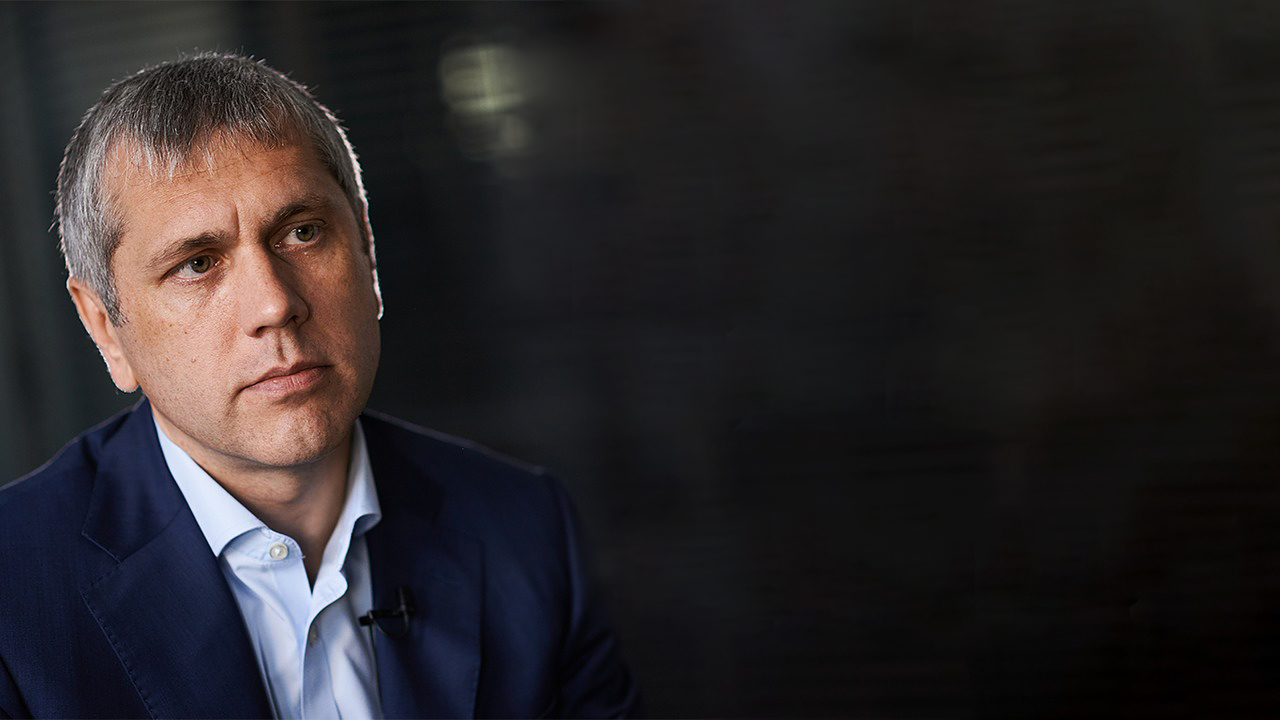When it comes to the long-term development of the enterprise, the main asset is people, rather than technology. Interview with Sergey Detyuk, Chief Executive Officer of Metinvest Digital
In the time of digital economy development, company’s digital transformation is key not only to competitiveness, but to survival in general. Aleksey Yankovsky, partner, head of Consultancy in the field of information technology and cybersecurity KPMG in Ukraine, spoke with Sergey Detyuk, Metinvest Digital CEO, about challenges and opportunities, technologies and talents, as well as about strategic vision from the CEO’s point of view on digital transformation in the century of rapid change.
In one of the interviews, you said that your company’s objective is to become a digital business partner. What do you mean by digital transformation?
We understand digital transformation as fundamental changes in the company that are based on digital technologies and aimed at creating new opportunities, new efficiency, a new product, a new business model and added value. This is a change in the entire business paradigm along with a cultural ideological revolution within the organization.
We should distinguish between digital transformation and automation or implementation of the latest technologies on existing production sites, since automating a single object or a process, or simply translating analog data into digital is no way a digital transformation.
Industrial sites have been using automation for a long time. However, it is digitalization that unites individual enterprise-level systems and makes them ‘think’: look for certain patterns, predict and optimize costs, influence the quality of finished products, forecast consumption of resources, report problems associated with production processes, and so on.
What goals does your company set as part of business digital transformation and how do you measure the result?
That is a very good question — key for any business. We see a gap between how we can work using digital technologies and what really happens with customers. Our goal is to bridge this gap. We measure success by the business value growth.
Success indicators in our projects differ depending on their goals and objectives, as well as the scope of application — building up an IT infrastructure, managing information systems, servicing user workstations or ensuring information security. We aim not just to implement IT solutions, but create business value on their basis. After all, design indicators can be achieved; however, it will not create any value. That, by the way, can be observed in the market: certificates are signed, money is paid, but there is no result. When it comes to digital transformation, each project should have its own business value, business goals, and indicators. Let me give you an example. Implementing a unified procurement platform helped speed up tendering by 50% and save the budget. The annual economic effect is more than $18 million.
Where do you think innovations need to be generated — internally or externally?
A decision depends on several factors: the level of company’s digital maturity, organizational features and a business culture. A well-developed ecosystem for searching and approbating new ideas is crucial to the long-term success of any modern company. The business lives mainly in a day-to-day format, and digital changes should be deep and systemic. Not all business cultures are mature enough to make out.
Metinvest Digital is amassing an internal expertise and focusing on the partnership ecosystem development. We have our own R&D center that works with the market and customers internally to find innovative solutions we want to test. We also created a platform for external participants — Co-InnovationLab. We plan to use it to gather our partners not only for a joint search for solutions in those areas that are not covered by one vendor, or in areas where solutions do not exist at all. We are also discussing close cooperation with two incubators within SCM Group.
As part of operational activities, we often use a pilot as the best way to implement digital projects, to show a concept, test it, and only then move on to replication.
How to organize the digital transformation management properly?
In digitalization projects, even within the same industry, there are no template solutions that can be replicated. Metinvest Group implements a large-scale digital transformation program in production, sales, marketing, and services. Each strategy is a customized solution to address a specific business task. I do not believe that necessary changes can be implemented by IT resources or business unit managers alone. We have a cross-functional team and a cross-functional approach to project implementation. Both parties should work as one team pursuing a common goal. However, it is very important to start transformation at the level of senior executives who believe in it. It is necessary to build up system relations with the business and help it develop a strategy and a roadmap, understanding the business needs and priorities. In fact, we work in a matrix structure: operational functions the Services & Operations supports all existing infrastructure and systems at all enterprises. The Solutions Delivery is fully responsible for all projects and new developments. It includes the Project Management Office as a standalone structure with certified project managers and follows the Waterfall, Agile, and Scrum methodologies. There is also an R&D center.
To manage the process, we have centers of expertise and competencies to develop business applications, industrial control systems, infrastructure and a ramified ecosystem consisting of more than 95 partners. All this gives us knowledge, technology, and access to resources we transfer to business. We establish cooperation with each business and the so-called ‘business engagement.’ Furthermore, we have account managers who are responsible for the development of their functional areas and determine priorities and projects to be implemented.
What are your views on Connected Enterprise? Are you developing something like that at Metinvest Group or Metinvest Digital?
We are moving in that direction. Metinvest Digital is trying to create value not from the automation of certain links, but from the integration of all processes. For example, you can simply implement CRM and this will give one result or you can connect CRM with back-end systems (software and hardware of the service — ed.) for logistics, shipments, accounting, planning and financing. In this case, the business will receive significantly more benefits if we know where a product can be ordered immediately, how much it will cost, and how long it will take to make it.
There is one important thing: projects do not live in the vacuum, they are always connected with the existing ecosystem and infrastructure. I have seen many examples where business units and the digital transformation center function separately and project management is transferred to the center completely. On the one hand, that is right to do, because they are the ones who know what to do and what to focus on. On the other hand, there is a profound discrepancy in the current operational levels. When people try to integrate projects into the existing business landscape, a huge number of problems and contradictions arise.
It makes transformation more complicated and longer. Metinvest Digital is building up an interconnected multi-level digital infrastructure that provides for both project implementation and project support and is aimed at improving efficiency, reducing costs, improving the quality while managing a digital transformation program.
As far as risks of cyber threats are concerned, how significant are they? How to mitigate or eliminate these risks?
Cybersecurity is among the top global topics on today’s agenda. On the one hand, each industry is increasingly dependent on IT, and on the other hand, cyber threats are very complex and heterogeneous, it is difficult to manage them. To manage information security and cybersecurity in Metinvest Group, a standalone business unit was created, in which the Security Operation Center is now being established. We are implementing a toolkit to monitor, respond and manage vulnerability of our systems. The Information Security Committee is a link between the digital team and the customer. It includes representatives of the Holding, our company and certain functional managers. The Committee discusses priorities and areas for the Information Security system development on a monthly basis. We also conduct regular cybersecurity audits to confirm that our level of security complies with international industry standards.
Considering your experience in transformation for Metinvest Group, do you plan to render such services to other organizations in Ukraine and abroad?
Yes, we plan to do it. In the next five years, we want to become one of the most reliable digital partners in Ukraine and Central Europe with a high level of trust. We have already gained vast experience and expertise: we serve more than 30,000 users and implement integrated IT solutions not only in Ukraine, but at enterprises in Europe and the USA. Our experience will be of interest primarily to large businesses in various sectors: metals and mining, telecommunications, banking, pharmaceutical, and agricultural. The list is endless. Using digital solutions and technological projects, we are ready to overcome the productivity and efficiency improvement limit. I think in the short run we can focus on the industrial sector where we are able to give more value.
In your opinion, how to maintain organizational health and work with representatives of different generations and ensure their integration and synthesis of technologies?
Despite its name, digital transformation is about people first and technology second. Workforce is the main value, and it is people that drive the final result. You should deal with people who are affected by a project or its results from the very beginning - involve, inform, train, motivate, perhaps even change their skills, understanding and attitude to the subject of transformation. People were, are and will be a key driver of organizational health and success.
Everything that has to do with staff development, motivation, company’s culture, and innovative spirit have all become priorities. A technology that will solve a problem and require the involvement of a few people and resources can be acquired; however, when it comes to the long-term development of the enterprise, it is people that drive transformation.
And yet your focus is to grow internal talents to attract them from the market?
Digital transformation has its flip side. Thanks to the general digitalization trend, almost every industry is now high-tech. Business processes are automated and digitalized, thus increasing needs for IT specialists in all sectors without exception. This puts high pressure on the labour market. We have a shortage of qualified staff. In the next two years, Europe is expected to see a shortage of more than 500,000 IT specialists. Given such trends, the answer to the question is simple: talents should be nurtured. Firstly, as I said, the market often does not have enough specialists we need. Secondly, it is necessary to develop skills, readjust and retrain.
Look at the trends: today drastic changes in the field of activities and profession are becoming the norm. As estimated by the World Economic Forum, more than half (54%) of all workers will need to be requalified by 2022. It is not just about IT specialists.
What top three technologies do you consider the most promising?
In my opinion, they may differ for different industries. In general, however, when it comes to the digital market, machine learning and artificial intelligence come first. The so-called computer vision comes second and a digital twin comes third. To expand this list, you may add the Internet of things as an elementary base offering the connected everything.
And the last question: who is the competitive employer in Ukraine today?
This is a company that can offer an interesting job and knows how to drive people. The employer shall motivate and give an opportunity to demonstrate the skills. That’s good when you are motivated by the system in which you work, its culture, when you can demonstrate ambitions and achieve something.




